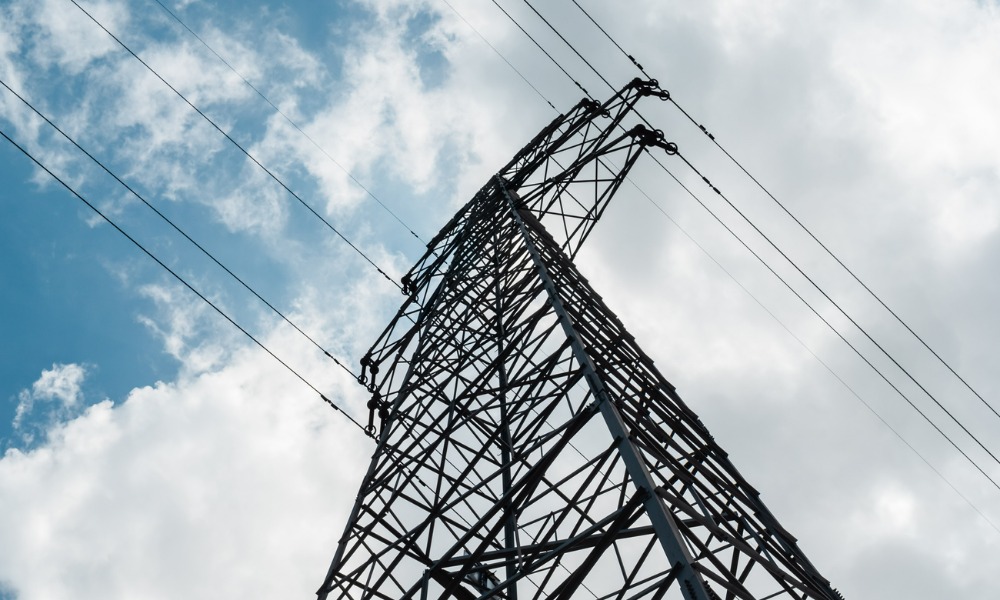How hard is it to secure insurance for major projects like transmission lines?

Logistical challenge
According to Karalis, horizontal projects like interconnectors and transmission lines share a number of common concerns while having their respective idiosyncrasies.
“Like any long horizontal project, it’s all the known unknowns,” noted Karalis during the video discussion hosted by Kishan Dasan, director of strategic growth for construction and natural resources in Australasia at WTW. “You’ve got a long alignment, and you don’t know what’s there.
“It starts off with the geotech. With interconnectors, you’ve got large steel A-frames in potentially high wind zones or nat cat (natural catastrophe) zones that need to be properly grounded. So, geotech is a concern. It’s about understanding the geotech across the alignment. They’re in nat cat areas, so with flood, bushfire, high wind, etc. That’s always a concern for these kinds of projects.”
Important factors to consider, said Karalis, are the manner by which contractors string interconnectors, what technology is being used, and how prepared they are for eventualities.
He noted: “There’s a number of traditional ways of doing it, whether it be by crane and lifting them up or by helicopter, which has got its own unique risk profile, as well. I think drones are starting to be used, but that’s some way to mitigate some of the risks of the other technologies.
“The other thing that the insurers are looking at is that, ultimately, this is a logistical challenge. So, they’re looking to make sure that you understand what’s going on, that you’ve got the plans in place to not only get it done but to get it done when there are potential problems such as nat cat, flood, etc.”
For the major clients & complex risks head, it’s crucial to have ample experience and resources.
“One of the other things that insurers are looking at – not just for this [type of] project but probably for every project at the moment – is the contractor experience,” said Karalis. “I’m not talking about whether the contractor has done this once before. It’s whether, one, they’ve got the right partners in this; b), they’ve got the right local experience and, also, potentially international experience to deal with it.
“And then they’re looking at whether or not you’ve got your ‘A’ team, or whether you’ve got the ‘B’ or ‘C’ team, and whether or not they’re adequately resourced to handle this. Resource has been the key commodity in this current time. So, they’re looking at a number of issues like that… They’re looking at whether it’s been done before, how it’s been done, and whether you got the right partners in doing it.”
‘Providing confidence’ to underwriters
Another issue, meanwhile, is that of capacity, particularly when it comes to professional indemnity (PI). It was noted that while the abovementioned concerns are predominantly for material damage and third-party liability, they are also relevant to project PI.
“First of all,” pointed out Drennan, “it’s a large infrastructure project, and market appetite for PI is relatively limited, anyway. But the laser focus of PI insurers is exactly the logistical challenge that the project poses. If we’re talking about interconnected projects, we’re talking about huge distances that far exceed the distances you would see on a regular road or rail project. So, it’s really the tyranny of distance we need to provide confidence to insurers about.
“There’s going to be temporary camps and associated access roads along the alignment, and we have to prove to [insurers] that the logistical planning is such that, should there be an issue along one point of the alignment, that epic distance often involved isn’t impacting on being able to remediate in a timely manner.”
Drennan said it’s about showing underwriters that the project team is “all over” the logistical challenges and that backup plans are in place.
“Unlike material damage and liability where there is relatively sufficient capacity, in project PI we’re talking about actually trying to secure enough capacity to fulfill the required contractual PI limit and/or achieve a limit that the successful contractor to the project is commercially comfortable accepting,” added the construction head. “[Capacity is tight] in the project PI market, and it’s about providing confidence.”
“Very simply,” declared Karalis, “it’s about giving underwriters the comfort that they need to underwrite the project and actually want to write it, and it’s really all just about information. My experience with clients has been that they know what the risks are and they always look at them and they always plan for them, so it’s really about communicating that very clearly with insurers.”
He went on to illustrate: “If you’ve got a bushfire risk, what are your bushfire mitigation plans? Are you going to be keeping a clearance around it? Do you have a vegetation management plan?”
Karalis said it’s important to communicate all the issues and how they’re being addressed, particularly from a risk mitigation perspective.
“That’s about it,” stated Drennan. “It’s just about information, information, information and providing confidence [to insurers].”
As a broker, how do you help clients secure insurance for major projects? Share in the comments below.





